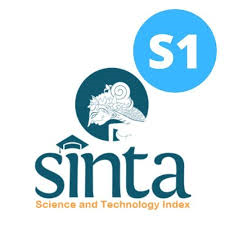A PHENETIC STUDY OF THE CALAMUS FLABELLATUS COMPLEX (PALMAE) IN WEST MALESIA
Abstract
Keywords
Full Text:
PDFReferences
ALRASJID, H. 1980. Pedoman Penanaman Rotan (A guide to planting rattan). Lembaga Penelitian Hutan, Badan Penelitian dan Pengembangan Pertanian: 37.
BECCARI, O. 1886. Palmae. Malesia. Genova: R. Istituto Surdo-Mun. 3: 62.
BECCARI, O. 1908. Asiatic Palms Lepidocaryeae. Part 1. The Species of Calamus. Ann. Roy. Bot. Gard. Calcutta 11(1): 45–66.
BECCARI, O. 1913. Asiatic Palms Lepidocaryeae. Suplement to Part 1. The Species of Calamus. Ann. Roy. Bot. Gard. Calcutta 11(1): 1–140.
BAJA-LAPIS, A.C. 2010. A Field Guide to Philippine Rattans. Asia Life Sciences Supplement 5. Rushing Water Publishers Ltd.: Philippines.
DJAMAL. 2012. Rotan kekayaan belantara Indonesia. Brilian Internasional, Surabaya.
DRANSFIELD, J. 1979. A Manual of Rattans of the Malay Peninsula. Kuala Lumpur: Malaysian Forest Records No 29. Forest Department of Malaysia.
DRANSFIELD, J. 1984. The Rattans of Sabah. Sabah: Sabah Forest Record No 13. Forest Department Sabah.
DRANFIELD, J. 1992. The Rattans of Sarawak. London: Royal Botanic Gardens, Kew, UK and Sarawak Forest Department, Sarawak, Malaysia.
DRANSFIELD, J. 1997. The Rattans of Brunei Darussalam. Brunei Darussalam: Royal Botanic Gardens, Kew, UK and Brunei Darussalam Forest Department, Brunei.
DRANSFIELD, J. 1990. Notes on rattans (Palmae) in Sarawak, Borneo. Kew Bulletin 45 (1): 87.
DRANSFIELD, J., UHL, N. W., ASMUSSEN, C. B., BAKER, W. J., HARLEY, M. M. & LEWIS, C. E. 2008. Genera Palmarum: The evolution and classification of palms. Kew: Royal Botanic Garden.
FURTADO, C. X. 1956. The genus Calamus in the Malayan Peninsula. The Gardens’ Bulletin Singapore 15: 32–73.
HENDERSON, A. 2009. Palms of Southern Asia. New York (US): New York Botanical Garden.
KRAMADIBRATA, P. & DRANSFIELD, J. 1992. Calamus inops (Palmae: Calamoideae) and its relatives. Kew Bulletin 47: 581–593.
LINNAEUS, C. 1753. Species Plantarum. London: Bernard Quaritch LTD 1.
MOORE, H. E. Jr. & DRANSFIELD, J. 1979. The typication of Linnean Palm. Taxon 28: 59-60.
RUSTIAMI, H. 2009. Konsep jenis palem: Sebuah pengantar. Berita Biologi 9 (5): 459–461.
RUSTIAMI, H. 2011. Revision of the genus Calamus (Arecaceae) from Sulawesi. Institute Pertanian Bogor, Bogor. [Dissertation].
RUSTIAMI, H., MOGEA, J. P. & TJITROSOEDIRJO, S. S. 2011. Revision of the rattan genus Daemonorops (Palmae: Calamoideae) in Sulawesi using a phenetic analysis approach. The Gardens’ Bulletin Singapore 63 (1 & 2). Pp.17–30.
WITONO, J. R. 2005. Keanekaragaman Palem (Palmae) di Gunung Lumut, Kalimantan Tengah. Biodiversitas 6(1): 22–30.
Refbacks
- There are currently no refbacks.









